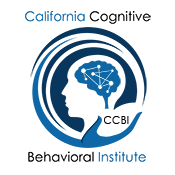When Emotional Brakes Fail
Depression and anger often go hand in hand
Flares and flashes. Outbursts and eruptions. The words used to describe anger tend to be volcanic. And science may explain why.
When an angry feeling coincides with aggressive or hostile behavior, it also activates the amygdala, an almond–shaped part of the brain associated with emotions, particularly fear, anxiety, and anger.
This finding is one in a series from studies led by Darin Dougherty, an HMS associate professor of psychiatry at Massachusetts General Hospital, that aim to uncover why anger attacks occur in patients with major depressive disorder. Some of these patients experience angry flare–ups that are inappropriate to the situation and out of character for the individual. “People will yell or throw things,” says Dougherty. “We wanted to investigate the mechanisms behind those reactions.”
For these patients, angry outbursts usually stop when the depression ends. Understanding this link could provide valuable insights into these disorders and their treatment.
Dougherty began in 1999 by investigating healthy people with no signs of depression and no history of angry episodes. He employed positron emission tomography imaging to examine which regions of the brain engage during angry moments. Subjects simulated angry moments by recalling the moments in their lives when they felt rage. “You can try to spark anger by showing upsetting pictures, for example,” says Dougherty. “But the response isn’t as robust. The best way to induce emotion is through autobiographical scripts.”
During angry recollections, the amygdala fired. At the same time, a part of the orbital frontal cortex, just above the eyes, also engaged, putting the brakes on emotion. “Healthy people experience anger,” says Dougherty, “but they can suppress it before acting on it.”
In depressed people who are prone to anger attacks, this neurological brake fails to engage. In another study, Dougherty found that in people with major depressive disorder and anger attacks the orbital frontal cortex did not activate. Rather, activity in the amygdala increased and angry outbursts ensued. More recently, Dougherty used functional magnetic resonance imaging to achieve a more fine–grained examination of the timing of the amygdala’s activation during angry moments.
Now Dougherty is applying these research techniques to examine what happens in the brain during treatment for anger and depression using drugs or cognitive behavioral therapy to better understand how treatments work mechanistically. Ultimately he hopes this work will give clinicians better insights into which treatment options might be best for patients.
Sticks and Stones
Verbal abuse injures young brains
Everyone feels anger. Traffic snarls, unsympathetic colleagues, playground bullies; we all have our triggers. The problems start when anger boils over into hostility and aggression, behaviors that cause harm.
Martin Teicher has documented the damage that parental verbal abuse wreaks on the brains of their children.
***According to research from McLean Hospital, seemingly harmless anger may cause invisible damage to the brains of young children. Martin Teicher, an HMS associate professor of psychiatry at McLean, has found that verbal abuse from parents and peers causes changes in developing brains tantamount to scarring that lasts into adulthood.
Teicher began his investigations by examining the effects of sexual abuse, physical abuse, and harsh corporeal punishment on young brains. In 2005, he turned his attention to parental verbal abuse, finding that verbal abuse had deleterious effects on par with witnessing domestic violence and other seemingly more violent forms of maltreatment. In 2009 he used diffusion–tensor magnetic resonance imaging to build an accurate map of the neural connections in the white matter of brains of adults who had experienced parental verbal abuse, but no other forms of abuse, as children.
He found three neural pathways that were disturbed in these adults: the arcuate fasciculus, involved in language processing; part of the cingulum bundle, altered in patients with post–traumatic stress disorder and associated with depression and dissociation; and part of the fornix, linked to anxiety. “The damage,” Teicher says, “was on par with that found in the brains of people who had experienced nonfamilial sexual abuse.”
More recently, Teicher found that peer verbal abuse—whether teasing, belittling, or disparaging words—can cause similar damage. “Kids often hear many negative things from their peers,” he says.
Teicher’s latest research suggests that parental and peer verbal abuse may affect children differently throughout development. When experienced during early childhood, verbal abuse can lead to somatization, the translation of emotions into physical illness. During middle school, it can increase the likelihood of drug abuse, anxiety, and depression. In high school, it can lead to increased anger and hostility.
“The expression of a lot of anger can be pathogenic,” Teicher says. “Children especially suffer when anger is vented. Openly expressed negative, raw, and intense emotion is hard for many people to witness and can leave scars.” That is, children’s brains seem to turn down the volume on abusive words, images, and even pain. The result is diminished integrity in these sensory pathways.
Teicher is now investigating the effects of witnessing domestic violence. Early findings suggest that all sensory systems may be vulnerable to violence; abuse that is heard may damage regions distinct from those injured by abuse that is seen or felt. His work as a whole suggests that anger may deserve more attention from psychiatry.
“We’ve really focused on depression and anxiety as key emotions,” he says. “But anger is a big problem. It’s a problem when we express it too much and when we express it too little.”
The Sound of the Fury
Turn off your phones. And televisions. And game consoles…
Everyone, from children to great–grandparents, uses electronic media, and media use will only grow more pervasive. At least, that’s how Michael Rich ’91, an HMS associate professor of pediatrics at Children’s Hospital Boston, sees it.
Yet since the earliest days of television, electronic media has been a blame–taker. In the fifties, people worried that television would turn children into delinquents. Today, parents fear that violent movie scenes and game scenarios will breed anger, aggression, and violence. These accusations against media, Rich believes, come down to values–based arguments, not scientific evidence.
In the fifties, people worried that television would turn children into delinquents. Today, parents fear that violent movie scenes and game scenarios will breed anger, aggression, and violence.
In an effort to drill down to media’s true effects, Rich has launched a longitudinal survey study. “We’re trying to create the media exposure equivalent of the Framingham Heart Study,” he says. The pilot study, now in its third wave of data collection, involves an ethnically and socioeconomically diverse group of 126 middle–school students from Manchester, New Hampshire.
Rich began the investigation with computer–based self–interviews to understand each child’s typical media use, health behaviors and health status. For one week, participants carry a Palm Pilot and video camcorder, soon to be replaced by a smartphone, which they are randomly signaled to use during waking hours to capture their locations, companionship, media use, focus of attention, and emotional state. After completing the 58–question form—which, given the media adeptness of the young participants, usually takes less than 90 seconds—participants make a quick 360–degree video of their environment. This video picks up environmental contexts, including media that go unnoticed by participants, such as loud music in the next room, a brother playing a video game in the same room, or even a billboard passing by outside a school bus.
An early result of the study is the research team’s definition of an important new measure: the Media Involvement Index, a measure of overall media immersion. The team’s hypothesis is that as children use media devices more frequently and concurrently, the children are more likely to show risks of adverse outcomes. The first findings, published in the February 2011 issue of the Journal of Adolescent Health, suggest that children with a higher Media Involvement Index have an increased risk of early alcohol use. Future results will explore how media involvement influences other adolescent health risk behaviors, from smoking to violence.
Rich aims to better understand the ways media affect people’s health and intends to share this information through his online parenting column, Ask the Mediatrician. “In a way, urging responsible media consumption is like promoting food safety and traffic safety,” he says. “You don’t want to lecture people, but to give them facts so they can make informed decisions.”
Elizabeth Dougherty, a former science writer at HMS, is now a freelance science writer and novelist living in central Massachusetts.

